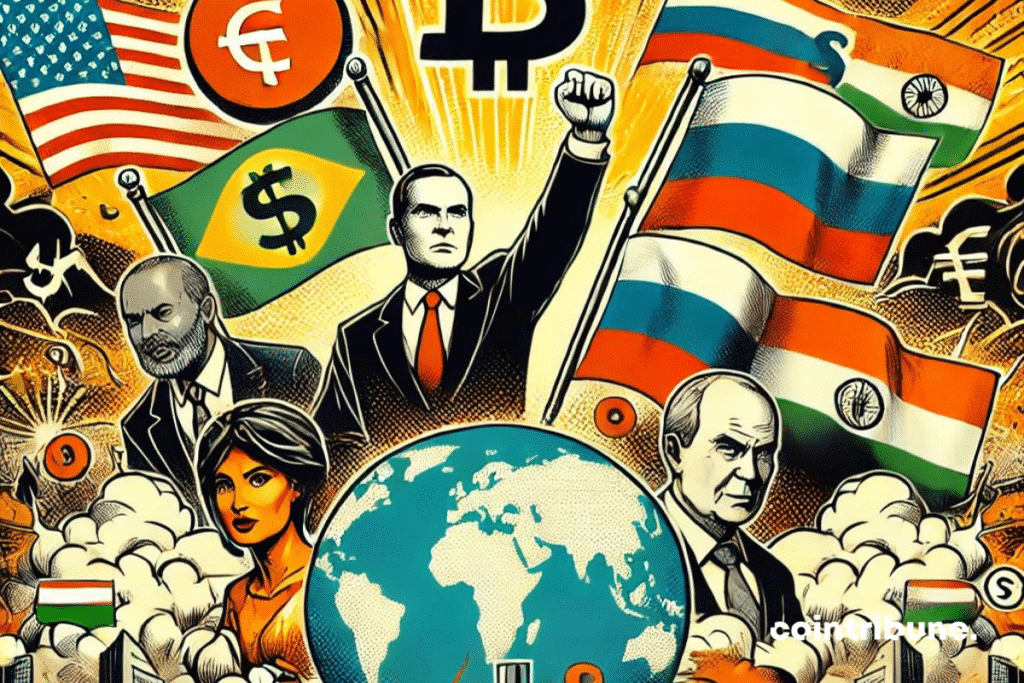Could The BRICS Currency Really Overturn The Dollar?
The global monetary landscape is undergoing significant changes. As the influence of the US dollar wavers under the weight of geopolitical tensions and aggressive economic policies, the BRICS nations are gearing up to redefine the rules of the game. They are working on launching a new reserve currency, an ambitious project that could shake the supremacy of the greenback and reshuffle the cards of international finance. Faced with the impact of economic sanctions, trade wars, and a perceived over-reliance on the dollar, these emerging powers are coming together to assert their economic sovereignty. But this new currency, envisioned as a direct alternative to the US-dominated financial system, raises as many hopes as it does doubts.

BRICS and the alternative to the US dollar
The BRICS initiative to create a new reserve currency comes amid exacerbated global economic tensions. For several years, the BRICS nations have expressed their desire to detach from the domination of the dollar, seen as an instrument of US economic power. During the 2022 summit, Vladimir Putin announced that the bloc was actively working on a “new global reserve currency” aimed at reducing dependence on Western currencies. This ambition has been bolstered by the sanctions imposed on Russia and Iran, pushing these countries to seek alternatives to circumvent US restrictions. The explicit support of Brazilian President Luiz Inacio Lula da Silva, who has consistently criticized the historical role of the dollar in international trade, illustrates this common desire to redefine the global financial order in favor of a more multipolar system, less subject to the whims of US policies.
The BRICS currency project, while enticing on paper, raises questions about its feasibility and economic implications. If it were to come to fruition, it would represent a significant blow to the supremacy of the dollar, which still dominates nearly 90% of global foreign exchange transactions. The project could lead to a redefinition of global financial flows, a decrease in demand for dollars, and potentially a weakening of the US economic position. However, the BRICS nations will face considerable challenges, including harmonizing the disparate economic policies of their members and managing internal tensions, such as those between India and China. To date, the project remains primarily a medium- to long-term ambition. The implementation of such a currency will not happen overnight.
A fragile balance to build
The idea of a common BRICS currency encounters major economic and political obstacles, making its realization complex and uncertain. The economic disparities among bloc members are a significant hurdle: China, with its dominant economy and already internationalized currency, tends to impose its influence on the other countries, making balance within the BRICS difficult to maintain. Non-Chinese countries fear excessive dependence on the yuan, to the detriment of their own currencies. India’s recent refusals to make payments in yuan for its Russian oil imports highlight underlying tensions. Will the BRICS nations be able to agree on the modalities of a common currency without exacerbating internal power imbalances? Big question!
Furthermore, the implementation of such a currency would require robust financial infrastructures and concerted governance, similar to the BRICS Bridge project, a blockchain-based payment platform designed to facilitate transactions in digital currencies of central banks. But these technological innovations alone will not be enough to overcome political resistance and international pressures, particularly from the United States, which views the emergence of an alternative financial system with disfavor. The project also risks being seen as a vector of instability by markets, which could hinder the adhesion of other nations and slow the adoption of a BRICS currency on the global stage. The uncertainties are such that, in the short term, the dollar retains its central role, supported by well-established institutions and economic networks.
Maximize your Cointribune experience with our "Read to Earn" program! For every article you read, earn points and access exclusive rewards. Sign up now and start earning benefits.
Diplômé de Sciences Po Toulouse et titulaire d'une certification consultant blockchain délivrée par Alyra, j'ai rejoint l'aventure Cointribune en 2019. Convaincu du potentiel de la blockchain pour transformer de nombreux secteurs de l'économie, j'ai pris l'engagement de sensibiliser et d'informer le grand public sur cet écosystème en constante évolution. Mon objectif est de permettre à chacun de mieux comprendre la blockchain et de saisir les opportunités qu'elle offre. Je m'efforce chaque jour de fournir une analyse objective de l'actualité, de décrypter les tendances du marché, de relayer les dernières innovations technologiques et de mettre en perspective les enjeux économiques et sociétaux de cette révolution en marche.
The views, thoughts, and opinions expressed in this article belong solely to the author, and should not be taken as investment advice. Do your own research before taking any investment decisions.